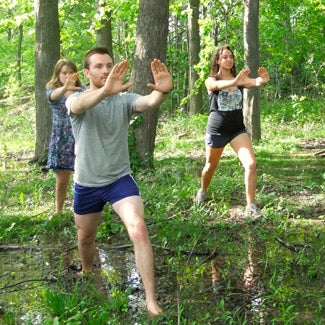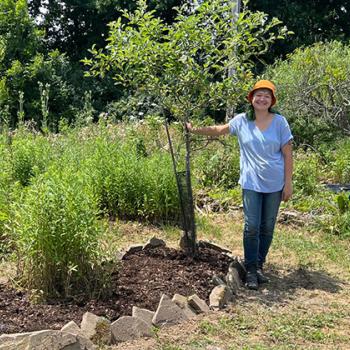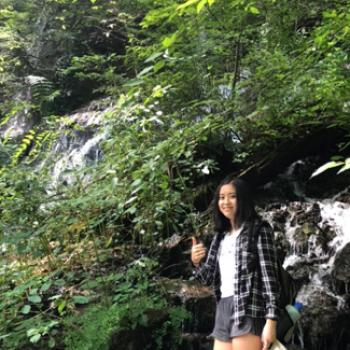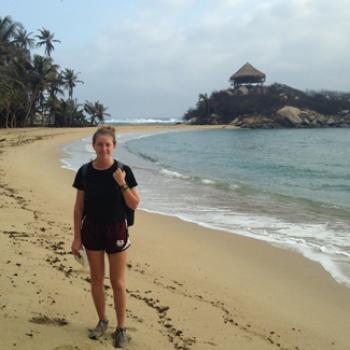On creating the Ecology Meditation Mindfulness ExCo
Corey Patrick Harkins ’12
“Each week we intertwined meditation and mindfulness activities into our learning ... we always left with mud on our jeans and smiles on our faces.”

We rise with the sun and amass in the Ladies Grove to the smell of desert sage and the crunching of frozen snow. Each of us bundled in layers of warm clothing, we sip hot tea and discuss the importance of soil, biogeochemical cycles, and loved ones who have died. It begins to snow. And we breathe.
This gathering happens weekly at 8 a.m., my favorite part of the week! Why does a group of college students wake up this early to venture into the below-freezing woods south of Oberlin? We gather to learn about Oberlin, to share our histories, to challenge our assumptions, to connect to our bodies, and to begin a lifelong healing process for ourselves and the earth. This class is called Ecology Meditation Mindfulness.
I became interested in teaching this Experimental College (ExCo) course simply because I was surprised it wasn’t offered already. The biology, geology, and environmental studies courses taught me a lot about the local area through scientific terms, but I perceived a lack of classes that offered an alternative way to perceive the natural history of Oberlin. Like every ambitious Oberlin student, I noticed a problem so I decided to help fix it.
To teach an ExCo, one must apply to the ExCo Committee with a syllabus and detailed class schedule, demonstrate previous knowledge in the subject area, submit two letters of recommendation, and attend an interview with the committee. If the course passes, then the instructor attends the busy ExCo Fair, where hundreds of students sign up for the multitude of ExCo courses, which include Tai Chi Chuan, Herpetology, Grassroots Organizing, and Songwriting.
My interest in plants led me to coteach an introductory course to Oberlin ethnobotany, which Mary-Claire Erskine and I named “Odigenous.” Our goal was to not only introduce students to the local plant life surrounding them, but also to provide a gateway for students to rethink how plants affect their daily lives. Many did not know that the berries of the Buckthorn are cathartic, or that Jack-in-the-pulpit is toxic (Griff Radulski and I found that one out the hard way). At the end of the course, we left with a better knowledge of how we can use the plants around Oberlin for medicine, food, and crafts. Odigenous gave me the opportunity to share a part of Oberlin that I find special.
After that teaching experience, I realized that my passions for meditation, mindfulness, and experiential education could be combined with my passion for Oberlin natural history into one cohesive course. Each week we met with a different subject in mind. One week we learned about rocks, the next week water; sometimes we learned the trees, other times we learned about flowers. But each week we intertwined meditation and mindfulness activities into our learning. We learned tai chi and sang to the river, we balanced our inner chakras, we explored the forest with our eyes closed, we ate dirt, we chanted, we breathed, we danced, we became animals, and we were confronted with many challenges. But we always left with mud on our jeans and smiles on our faces.
Teaching Ecology Meditation Mindfulness was a pivotal moment in my Oberlin education. Oberlin gave me the opportunity to experiment with an alternative approach to education ... and succeed. With this experience, I know I can be a better teacher and inspire others to incorporate place-based, experiential education methods into their curriculum. Ecology Meditation Mindfulness is a stepping stone for my future and a catalyst towards healing ourselves and our earth.
Tags:
You may also like

On Tending the Learning Garden
I learned what grew where and when each species bloomed...I learned that actively engaging in nature, every day, is the best teacher of these things—better than any book or classroom could ever do...
Amanda Salmons ’23

On Promoting Youth Climate Action
‘‘Prior to attending Oberlin, I was unaware of the extent and impact of climate change. In the fall as a first-year, I was introduced to research in the environmental studies department and was...
Harriet McSurdy ’23

On combining interests in creative writing and environmental studies
“In providing a text that shares experiences of running and strength in running, I hope that this collection helps women feel more empowered to openly move throughout the environment.”
Becca Orleans ’16